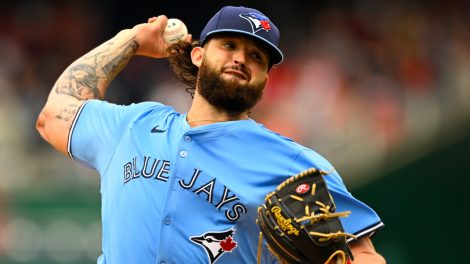Without realizing it at the time, this past summer we witnessed the final August trades in Major League Baseball.
On March 14, MLB announced that effective immediately, there will be a single July 31 trade deadline. And for the 2020 campaign, teams will have 26-man rosters and a three-batter minimum will apply to most pitchers, making roster shuffling a little more complicated.
Those were just a few of the many changes announced by MLB and the MLBPA Thursday in a major agreement between two sides that have publicly been at odds since last off-season. Adding to the significance of the announcement, it happened in the middle of a collective agreement, three years earlier than necessary.
Not only will the rule changes announced Thursday increase pace of play, they’ll open up strategic challenges for decision makers across baseball and set the stage for even bigger changes in future seasons. In the meantime, these changes reflect baseball’s newfound willingness to explore ways of appealing to the modern audience both at the MLB level and with bolder experiments previously announced in the Atlantic League.
“In every other business, in every other form of entertainment, in every other sport, they’re making adjustments all of the time to adapt to that,” Blue Jays president Mark Shapiro said earlier this week. “So it’s that careful balance of how do we do things, how do we test things, how do we determine where we can improve the game without walking away from the tradition that makes the game great.”
At first glance, the proposed changes don’t threaten the integrity of baseball’s tradition. By reducing the time between innings and further limiting mound visits, for example, MLB will increase pace of play so slightly that few observers would have noticed if the league had made these changes unannounced. Still, small-scale changes add up.
“To me, and this is personal, it’s about trying to increase pace of action,” said Shapiro, a member of baseball’s competition committee. “It’s not armageddon. I’m not apocalyptic in my view of the game, but I think if we want to grow our game, the pace of action would be an important thing to consider.”
Off the field, the single trade deadline will have a noticeable impact immediately. Now that the possibility of August trades has been eliminated, there will be more urgency for teams ahead of the July 31 deadline. The players hope that will motivate teams to spend during the off-season instead of relying on the trade market to supply reinforcements. Regardless, there will be less confusion for fans and more reliance than ever on in-house solutions.
To some degree, there’s an opportunity for agents here. Even if the trade deadline is July 31, free agents could still sign in August. Some agents are intrigued by the idea of negotiating later opt-outs for clients on minor-league deals. If the NBA’s buyout market offers any indication, having some freedom after the trade deadline might not be a bad thing for players.
Next year, some even bigger changes will take effect. While some worry that the three-batter minimum will eliminate the lefty specialist, those concerns might be overstated. Pitchers can still face one batter if they end the inning, and as an alternative, they could simply pitch around a right-handed bat between two lefties. Plus, the expansion to 26-man rosters means teams have more room for role players.
While significant, the changes announced Thursday are just the beginning. As first reported by ESPN’s Jeff Passan, the sides plan to start discussing larger labour issues soon even though the current collective agreement doesn’t expire until December of 2021. When the focus turns to economic issues including free agency, the competitive balance tax and service time manipulation, the stakes will be higher.
Beginning last off-season, many players started voicing their concerns over the current state of the game. As Alex Gordon recently explained in the Kansas City Star, baseball front offices value young players most while paying them least.
“I’m not saying (veterans) should get more money,” Gordon said. “I’m saying it should be fair. I’m saying if you’re going to treat older players the way you are, then young players need to get what they deserve.”
From a front office standpoint, there’s more awareness than ever that players are often declining by the time they hit free agency. Armed with that knowledge, executives are hesitant to spend big on aging players. Meanwhile, many of the best players are stuck making the big-league minimum.
“There is no devaluation of players,” Shapiro said. “None. But the understanding of where that value lies has changed dramatically. In essence, what’s happened is teams have gotten away from paying players for past performance and started thinking more about paying players for their future contributions.”
The smaller-scale agreements regarding roster size and mound visits represent positive steps forward for MLB and the MLBPA, but much larger challenges exist between now and 2021. As people on both sides acknowledge, the game’s economic structure needs change in some significant ways.
“Certainly there’s disappointment, there’s anger, there’s frustration,” Shapiro said. “My expectation would be that the system at some point when negotiations happen will probably correct and will probably shift towards making sure players compensated in a way that aligns with their values. Right now there’s some disconnect with the way they’re compensated and the way we value them.”
[relatedlinks]









